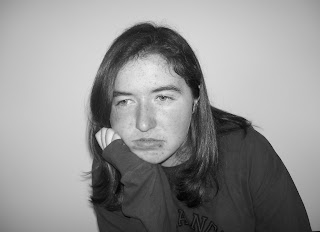Portraits
• People are most popular subject for photography.
Early Portrait Photography
• Painting was used for portraits at first
• Gaspard-Felix Tournachon (1820-1910)
o The first great portrait photographwe started in France in 1853
Used “Nadar” on photos so people won’t steal the photos (pseudonym)
Used soft lighting and plain, dark backgrounds
“speaking likeness”
• Portraits that revealed his subject personally.
• August Sander (Germany, 1876-1964)
o Created some of the first environmental portraits
Creating Portrait Photos
Thinking Artistically
• Textures and shapes become more or less visible as the value changes
• You can use light and dark values to emphasize certain aspects of your subject
Working with People
• Photographer and the person has to work together, gain trust, and be comfortable around each other
• A successful portrait photographer learns to become comfortable in front of people and interact with them
• Talk to your subject (person) to make them feel at home and at ease.
Camera Formats
• Want to balance between having enough detail and being able to respond quickly to your subject
• Many professional portrait photographers go with:
o Medium format camera because of their bigger negatives and their ease and speed of operation.
Film Choices for Portraits
Film Speed
• Slow Films (50 to 100 ISO)
o The particles of silver for black and white films, or dye for color films, are fine-grained and small in these slow films.
• Fast Films (400 to 3200 ISO)
o These faster films are more sensitive to light and are ideally suited to available-light photography, like candid and environmental portraits
Black and White or Color?
• Black and White
o Focus the viewers attention on the subject
o Eliminate certain distracting elements
Bright colors in the background or in subject’s clothing
o Can have a formal and more serious look
• Color
o Can carry feelings and impressions with them
o Warm colors
Reds, oranges, and yellows
Set a definite mood of energetic intensity
o Cool Colors
Blues and greens
Very different feeling to them one that is restful and calm
o Consider the mood you are trying to create in the image and carefully choose the type of film to use
Equipment choices: Lenses for Portraits
• 24 mm
o Too close up to subject
• 50 mm
o Shows faces less round and broad
• 100 mm
o Most flattering to image
Camera Accessories
• Tripod
o Three-legged metal stand on which you can mount your camera
• Cable Release
o A flexible wire one end of which attaches to the cameras shutter release
o Lets you trip the shutter without touching and jarring the camera
o Guarantee super-sharp results, as long as your subject isn’t moving
• Reflector
o Anything that will reflect light into shadows to lighten them for a flattering and three-dimensional portrait
The Formal Portrait
• Formal portrait
o Simplest portrait and should emphazise the person and nothing else.
Indoors
o Place person on one color background
Outdoors
o Place person in front of sky/ ocean or lake, hedge or leafed-out tree
o Make sure you don’t put sun in picture or it will throw off the cameras meter and torn the person into a dark silhouette.






















